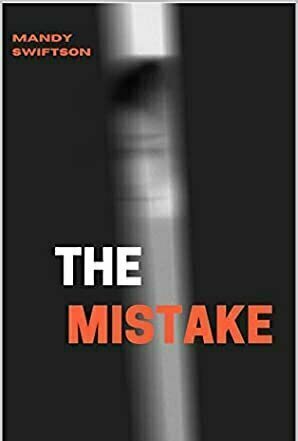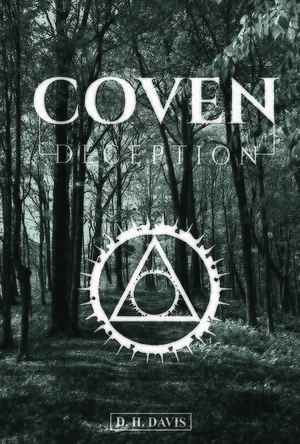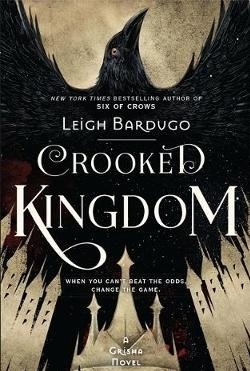
AHA! - Video Chat
Social Networking and Utilities
App
Have you got fed up with common chatting APP and always get ignored by others? Are you tired of...
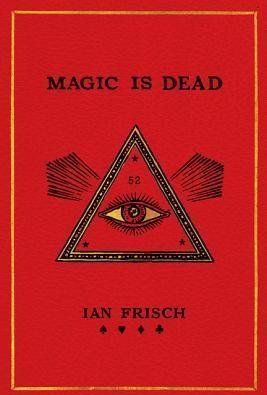
Magic Is Dead: My Journey into the World's Most Secretive Society of Magicians
Book
In the vein of Neil Strauss’ The Game and Joshua Foer’s Moonwalking with Einstein comes the...
Charlotte (184 KP) rated The Mistake in Books
Mar 20, 2021
Also this is trigger central with physical and emotional abuse, rape, bereavement, suicide attempts and self harm. If ANY of this affects you please seek help.
Let's start at the beginning.....yes maybe it was a mistake BUT remember you were being MANIPULATED. At the point you made that first 'mistake' he had already done the ground work, he'd slowly started controlling you and your environment......you didn't have a real choice.
He was a master of manipulation and deception, he already knew what words and phrases to use to get compliance........he had experience of it, he relished it. The guy had plausibility and knew how to create a good story....a believable one, well, multiple stories. The story to fool authorities, the story to fool family and friends, the story that became the script of your life.....this is NOT your fault! Whether due to generally being a trusting person or (for Mandy) being vulnerable from a previous bad relationship, you were taken advantage of.
Hope is a make or break feeling, meeting number 4 full of hope for things to get better was bittersweet. I don't have children but can only imagine what emotional trauma was caused from the very first moment of fear for the children. I take my hat off to all the survivors who steeled themselves and did what was necessary to protect their babies. Mandy did what was needed, not for her but her babies.....that's selflessness right there.
MB passing, for goodness sake! It's fluffing heartbreaking. Not going to lie I cried, for MB, for someone that deserved happiness but yet again was dealt a crap hand in life.
Totally unimpressed with flakey bake, I won't say anything else as I'll just swear a lot.
I've actually met Mandy a few times. She came across as outspoken, independent and strong in person, as well as fun (She's serious about the changing hair colours).
Having read this I have no doubt of the strength of this amazing woman. Followed for years by many demons yet still able to stand up and carry on, able to put into words, write a book, about things that most people wouldn't be capable of imagining let alone have touch their lives. A true inspiration.
I know how depression can creep up on you, stalk you, cloak itself so self doubt sets in......I also know how hard it is to ask for help but please ask, it's a lifesaver.
A story of freedom, survival, heartbreak, despair, hope and love as well as so much more.
This is a tissues and chocolate read from start to finish.

Game of Thrones: Conquest™
Games
App
Westeros is at war. Great houses clash, dragons rule the sky, and the army of the dead threatens the...
Night Reader Reviews (683 KP) rated Coven Deception in Books
Feb 4, 2020
Brooke Lesley is in training to become the leader of her coven once she turns eighteen but it is not that easy. She must deal with an overbearing father, mastering incantations, and learning history from Elders who are hiding things from her. Being super stressed out Brooke decides to take a walk during lunch and ends up witnessing two men trying to rob an old lady. Brooke steps in to help her only to find Jessie, a boy from her school has the same idea. As it turns out he is a vampire which means that their friendship is forbidden.
Soon strange things start happening all over town and an Elder from another coven is killed. The coven Brooke is from ignores all the signs and lets their long-standing hatred for vampires cloud their investigations. Brooke and her friends notice that not only is this unnamed threat an issue but also the Elders are hiding the truth about the feud with the vampires. It will take cunning and rule-breaking on their part but is up to Brooke and her friends to find out what really is going on, and to try to stop it.
I enjoyed how Brooke found it in herself to stand up to her father and the Elders when she discovers they are hiding things from her. The fact that her mother encourages her to do what she must in order to make changes the coven desperately needs instead of following blindly behind her husband was also surprising considering the coven dynamics. Honestly how similar this book was to Twilight was a definite downside to me. The whole forbidden love with a vampire seems kind of overused and when the wolf attacked the school I was just waiting for Brooke to say it was a shapeshifter and start talking to it.
Young adults and teens will enjoy this book the most. It might even be safe for most middle school students. Fans of the Twilight series will either love this book because of how similar it is or hate it, calling it a rip-off. I give this book a 2 out of 4 rating. I found it to be a good midrange young adult book. It might not have been the best supernatural teen romance but it was certainly far from the worst. I would recommend it to fans of the genre looking for a quick read.
https://nightreaderreviews.blogspot.com
https://facebook.com/nightreaderreviews
https://smashbomb.com/nightreader
postapocalypticplayground (27 KP) rated The Last Namsara in Books
Jan 9, 2018
The last Namsara is very much a book of revelations for Asha. The dragon attack when she was a child left her without a mother and also horrible scarred from the burns she suffered. Having to not only live with the fact that she is hated she also has to deal with the stares associated with her disfigurement, the armour she wears is both necessary for her hunt and for her emotional wellbeing. When her secret is out following an accident during a hunt, she is tended to by Torwin, her betrothed’s slave, who seemingly is willing to keep her secret, but at what cost to both of them?
Through a series of cruel acts she finds herself visited by the first Namsara who starts her on a path that will not only unravel the truth about what happened the day of the dragon attack, but also a much deeper and long running deception. Asha must therefore right the wrongs.
I very much liked Asha as a character, I found that she was written with both strength and vulnerability, she has always been the Iskari and that has given her an opportunity to hide behind a persona. She is however still a teenager and she has the same hopes and fears as everyone, but her hardened act is thankfully easy to scratch beyond the surface of. The book was an easy flowing read and I particularly liked how the Old Stories were interwoven into the pages, completing parts of the story and acting almost like a running prologue. It was a great way of explaining a complicated back story without being an info dump on the reader. I also found that there was a great deal of realism about the aftermaths of events, the fact that laws can’t be changed to suit the sovereign and that one persons change for the better will always be anothers change for the worse. It didn’t shy away from the ugly side of things and that always gets good marks from me.
That being said, I found the Last Namsara lacked a certain spark. I enjoyed reading it very much don’t get me wrong, but it didn’t have my pulse racing and I found it easy to put down of an evening. I would still recommend this to anyone who is a fan of dragons and kick ass female protagonists as it really does have a lot to like.
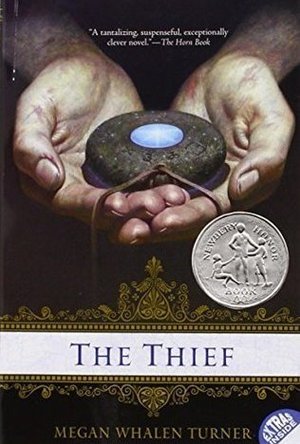
The Thief (The Queen's Thief #1)
Book
Discover the world of the Queen's Thief New York Times-bestselling author Megan Whalen Turner's...
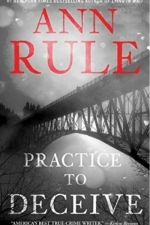
Practice to Deceive
Book
#1 New York Times bestselling author and Queen of True Crime Ann Rule delivers another gripping...
True crime murder
5 Minute Movie Guy (379 KP) rated Focus (2015) in Movies
Jul 1, 2019
Unfortunately, therein lies the film’s biggest problem. While I do think there is some merit in its depiction of the con game, Focus for the most part is unconvincing. Not only did I feel like I was being conned by the characters, but I felt like I was being conned by the legitimacy of the cons themselves. Most of them are quite a stretch, to say the least, but more troublesome is that their successful outcomes don’t ever feel truly earned. Everything just cleans up too neatly, due to some inane level of planning that relies on far too many improbable factors and additionally treats every mistake as if it was part of the plan all along. Therefore, trying to take Focus seriously is something of a brain-numbing exercise. While the film itself is fairly entertaining, it’s not nearly as smart as it thinks it is.
As a viewer, it feels like there’s not much of a pay-off in watching them pull off their successful schemes, and that’s largely because we’re left out of the loop. We the audience are being played the whole time. We’re not given any room for our own participation and guesswork because the movie gives us no clues to help us solve the puzzle. Yet it’s inviting us to look for answers by emphasizing the importance of being focused and aware, while withholding any and all necessary clues to help us make sense of what is happening along the way.
In Focus, Will Smith plays con-man Nicky, who meets a beautiful woman named Jess (Margot Robbie) while dining alone one night. After inviting Nicky to her hotel room, Jess attempts to con him with the help of a friend, but ultimately fails. After all, you can’t hustle a hustler. Being eager to learn more, Jess wants Nicky to take her under his wing and teach her the art of his craft. What ensues is a steamy relationship and a partnership in deception.
Jess proves to be a natural in the con game, quickly earning the respect and admiration of Nicky, who allows her to join his thirty-strong crew. This team of crooks racks up millions through swindling, hustling, and pickpocketing. It’s fun to watch the action unfold, but a little disconcerting that it glorifies these criminals while they’re plainly stealing from innocent strangers. Make no mistake about it, Focus portrays them as the good guys, and offers little to no consequence for their devious actions. Still, it’s hard to root against this cast of con-artists, and you’ll want to see how they manage to get away with it all.
Instead, Focus tries to make you believe there isn’t any con in play at all, only to later pull out the rug to reveal a highly ludicrous scenario. It feels dishonest and cheap, like it’s essentially cheating its way to the desired outcome without doing the work to get there. It’s selling its own capers short and taking the fun out of them. Thus even the climax of the film feels disjointed because we can’t believe what we’re seeing and just have to watch incredulously as we wait for the inevitable far-fetched explanation.
Despite the shortcomings of the cons, I would like to express that the film still does plenty of things right. First and foremost, Will Smith shines in his performance, adding enough perplexity to his character to keep you on your toes. He makes it hard to tell whether or not his character Nicky is bluffing, which helps add to the tension of scenes. Even when Nicky appears to break character and let his guard down, I still found myself guessing about his true intentions. While the movie is overall somewhat of a letdown, I can safely say that Will Smith absolutely nails it.
The only issue I had with Will Smith is his character’s obsession with Margot Robbie’s Jess. I’m sure many guys could attest to a Margot Robbie obsession, but I’m not one of those guys. While the chemistry between Smith and Robbie was fairly good, it did seem more than a tad blown out of proportion. The romance between them felt rushed and more lustful than loving. Still, Robbie gives a respectable performance of deception and allure.
I would like to particularly applaud the work of B.D. Wong, who plays a high-stakes roller that gambles with Nicky during the Super Bowl, in what is my personal favorite scene of the movie. The tension between Wong and Smith is absolutely electrifying, and they play off of each other extraordinarily well. I was on the edge of my seat throughout their whole encounter, only to have the moment spoiled by an absurd and unlikely final outcome.
The other performances are all adequate, though most of the characters are given little screen time, aside from Nicky’s perverted, overweight associate Farhad (Adrian Martinez) who musters up a few laughs. The dialogue can be pretty hit-or-miss, and the plot is rather thin, but the production values are outstanding. This is a film that is unmistakably beautiful to look at, with gorgeous sets and superb camera work. One particularly admirable scene has the camera placed in the passenger seat focused on a man who is gearing himself up before he deliberately crashes his car head-on into another. It’s a moment that feels like a strange detour, and yet it’s so bizarre and memorable that it just works.
Focus has the makings of an excellent film, but it regrettably drops the ball by fumbling the con game. If only the cons themselves weren’t so far-fetched and sloppy, the whole movie would have been a whole lot more effective. Despite the film’s insistence that you look closely, its most pivotal moments don’t hold up to any sort of analysis or scrutiny. In other words, this is a film that would be best enjoyed out of focus.
(This review was originally posted at 5mmg.com on 1.31.16.)
postapocalypticplayground (27 KP) rated Crooked Kingdom in Books
Jan 9, 2018
Crooked Kingdom is a longer book than Six of Crows yet the action takes place mainly over a matter of days, the multiple POV's stretching the tortuously epic and heart thumping twists across the pages. It still has that immense page turning captivation that was within Six of Crows, but it just lacked that extra sense of excitement along with it. They are both books of equal joy but I think book 1 just pips it, but only just. In typical Kaz Brekker style there are twists and swindles and multiple cons that would given Danny Ocean on his best day a run for his money. I love a story that keeps me questioning myself and hanging on a thread as to the outcome, and Crooked Kingdom gave this to me in spades.
I don't know what is wrong with me of late in the emotions stake, but this book again reduced me to tears, the short but intense bursts of connectivity with the characters overwhelmed me. Multiple POV's in books is a risk and I have been drowned by them in books in the past but Leigh Bardugo manages to completely avoid this. Despite every player being forced to battle for chapter time, I felt utterly part of them and their story, sharing their joys and sadness as they peaked and troughed through the words.
The only thing that I didn't enjoy about this concluding part of the duology was entirely down to the publisher. I read the paperback of this book and found that the text was just so hard to read. The margins were so tight, the text was disappearing into the gutter and hiding under my thumbs as I was reading. I hate having to bend back spines on paperbacks which made this even more of an arduous task, I get that more text on a page means fewer pages and lower print costs but this made it such a hard read at times, sort it out Indigo!! This is the first Duology that I have read and I have to say this is now my favourite book series style, all of the action and none of the filler - I hope that more writers/publishers take this forward in the future.
Would I love more from Kaz and the Dregs? Of course! However, unlike a TV show that jumps the shark I am glad that the world of Ketterdam has been left the way it has and I look forward immensely to the next original world created by Bardugo.
